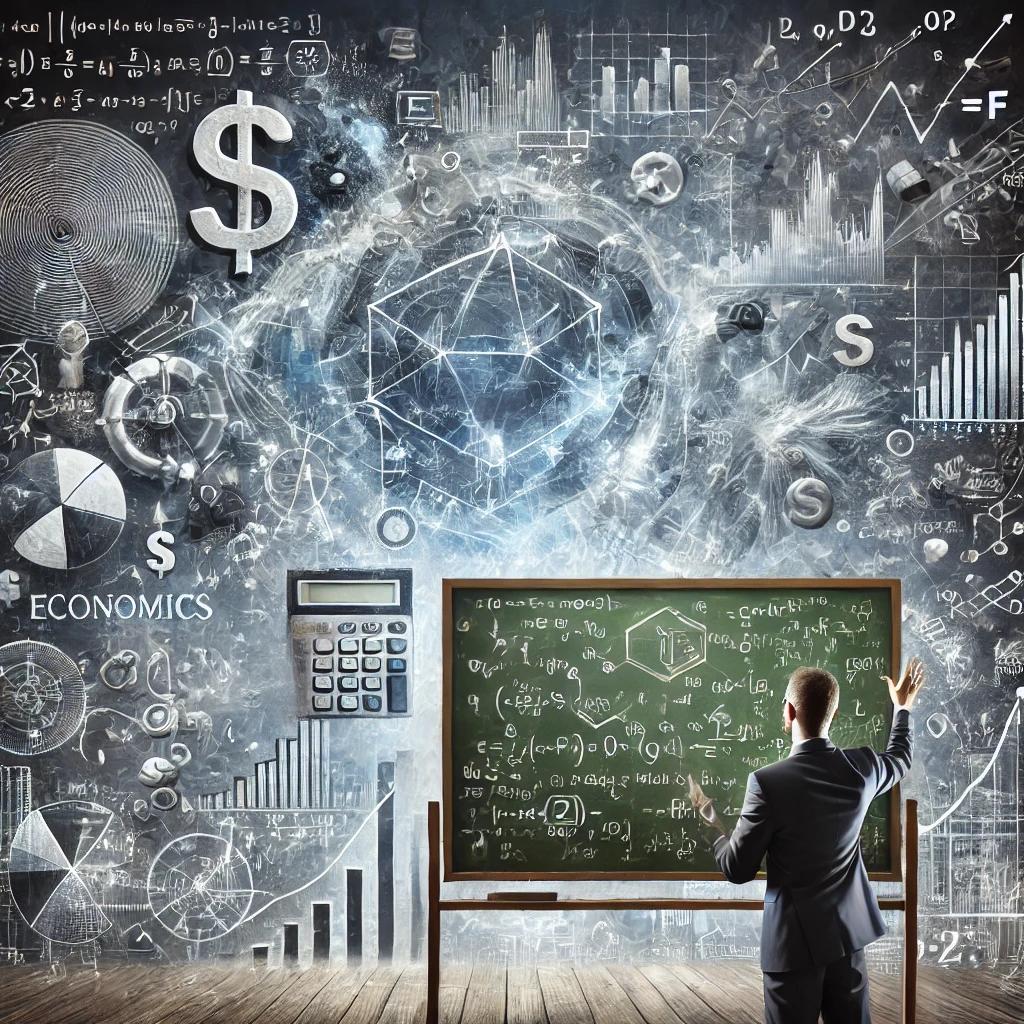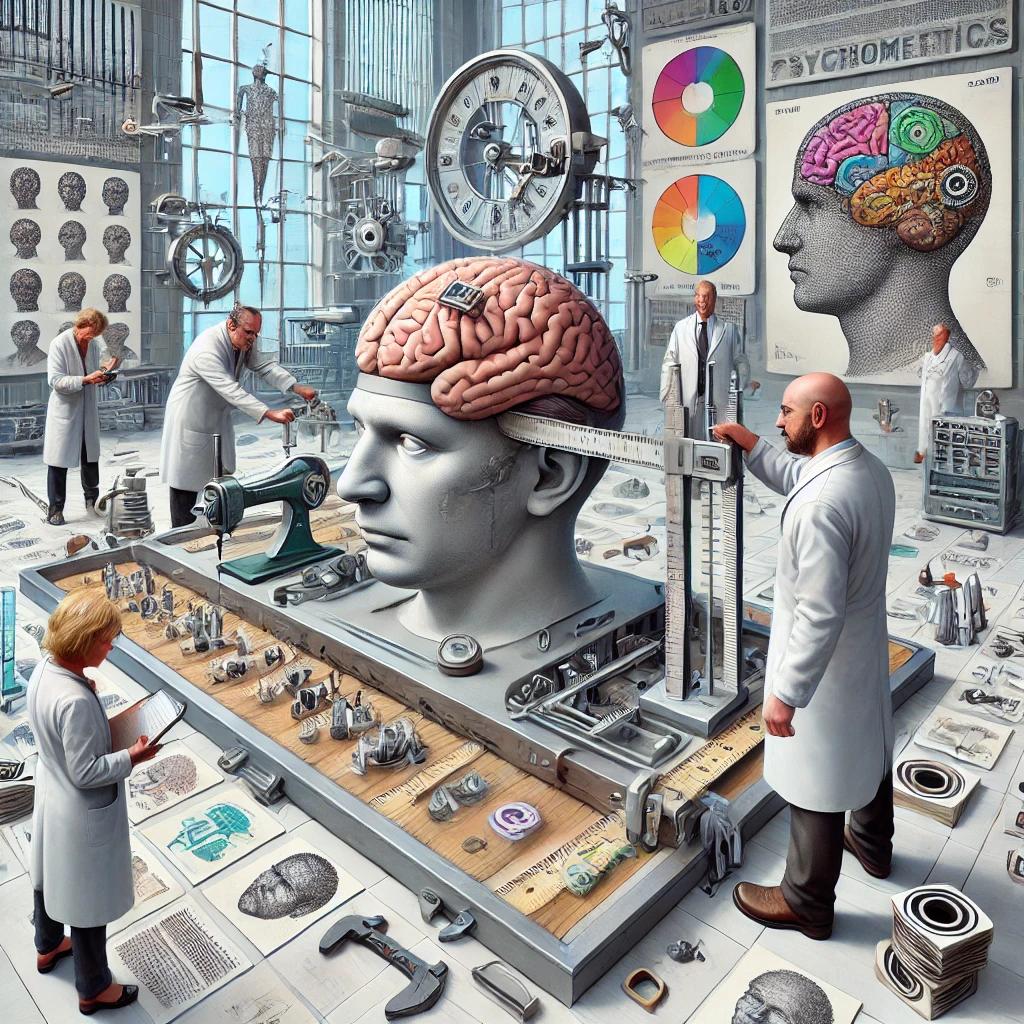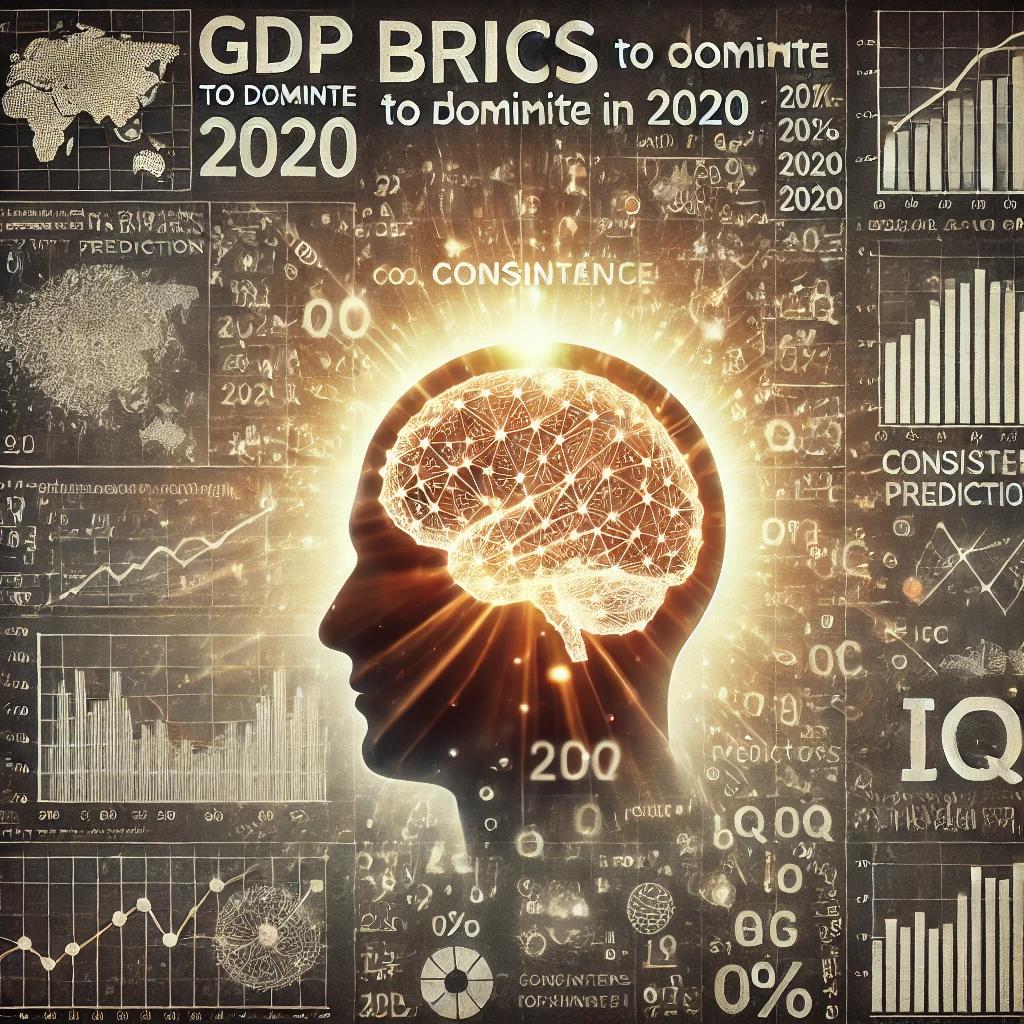Economics and psychometrics share some of the same features. They are undoubtedly humanities. We cannot go without relationships between inflation, unemployment, interest rates, and so on. However, economics is undoubtedly a pseudoscience.
It basically cannot predict crisis, human behavior, heavily depends on mathematical formalism without real-world application, and so on.
Psychometrics offers huge numbers of statistical predictors. In my huble opinion, it is not a pseudoscience, however, it is not an exact science, so the results are cosequently limited.
Economics is a pseudoscience

Economics is criticized as a pseudoscience, and the reasons go deep. It is a discipline that aims to explain and predict the behavior of economies, yet it often falls short of scientific standards. The flaws are not minor – they cut to the heart of its claims to legitimacy.
Economics lacks predictive power
A true science relies on its ability to predict outcomes with accuracy. Physics can predict planetary motion. Chemistry can forecast reactions under specific conditions. Economics? It struggles. Major economic crises, such as the 2008 financial meltdown, blindsided most mainstream economists. Forecasts on GDP growth (notably of the BRICS), inflation, or market behavior are frequently wrong, sometimes laughably so.
This isn’t just bad luck. The problem lies in the unpredictable nature of human behavior and the sheer complexity of global markets. Economists attempt to use models that rely on simplifications, yet these simplifications fail to capture the messy realities of human decision-making. If a field cannot consistently predict its subject matter, can it really be called a science?
Unrealistic assumptions
At the core of many economic models are assumptions that range from simplistic to absurd. Humans are assumed to act rationally, seeking to maximize their utility. Markets are assumed to be efficient, with perfect information available to all participants. These ideas sound tidy on paper, but they bear little resemblance to how people actually behave.
In reality, people make emotional, irrational decisions. They act on incomplete information, fall prey to cognitive biases, and are often driven by social and cultural influences that economists barely account for. The result? Models built on these assumptions frequently collapse under real-world conditions. They describe a theoretical world that doesn’t exist.
Ideology and heavily politicized
Economics is deeply intertwined with ideology. Theories often reflect political and economic agendas rather than objective truths. Keynesian economics, neoliberalism, monetarism – each school of thought has been championed not because it represents scientific consensus, but because it aligns with the interests of powerful groups.
For example, free-market ideologies serve the super-rich, justifying deregulation, lower taxes on wealth, and reduced government oversight. Critics argue that economics is less a science and more a tool to legitimize existing power structures. If a field cannot separate itself from the biases of its practitioners or its funders, it loses its claim to objectivity.
They tell you capitalism in this way is the only possible way (see below).
Surplus value no longer a value
Surplus value is not prominently included in modern economic theories. This is because modern economics focuses on frameworks like market dynamics, utility maximization, and marginal analysis, which avoid value theories rooted in labor. Surplus value, central to Marxist economics, relies on the labor theory of value, which many economists dismiss as outdated, particularly in service-based economies.
The exclusion, however, is not just about relevance – it is also ideological. Discussing surplus value exposes the exploitative relationship between labor and capital, challenging the very foundations of capitalism. This creates discomfort among mainstream theorists, as it risks undermining the system’s ideological justification. By ignoring surplus value, modern economic theories reinforce the narrative of market equilibrium and growth, sidestepping critiques of inequality and exploitation embedded in the system.
Economics won’t measure the interest groups

The super-rich families (Rothschilds, Rockefellers, Astors, Morgans, etc.) behind Goldman Sachs, JPMorgan Chase, and Deutsche Bank maintain control of global finance through an intricate web of influence, ownership, and financial power.
They ensure that capital flows in ways that benefit their interests, creating global dependence on their financial institutions. Whether through debt, monopolization, speculation, or offshore finance, these families use their control of financial markets to maintain and grow their wealth. Their influence over government policy and corporate governance further entrenches their power, making it nearly impossible for nations or industries to operate independently. This financial system, controlled by a few wealthy families, ensures that the global economy works for them, keeping much of the world economically dependent and vulnerable to their decisions.
Only this type of capitalism
In specific country examples, the United States exhibits a pronounced service-oriented economy, with the services sector accounting for about 80% of GDP. Meanwhile, industry and agriculture contribute only a small fraction. China, on the other hand, demonstrates a more balanced distribution with the services sector contributing approximately 55-60% of GDP, while industry accounts for around 40%. In India, the services sector also plays a significant role, contributing about 55-60% of GDP, with industry and agriculture making notable contributions as well. Brazil shows a similar trend, with services comprising around 70% of GDP, followed by industry and a smaller share of agriculture. These patterns illustrate the varying economic structures and stages of development across different nations. Therefore, it highlights how shifts from agriculture to industry and then to services reflect broader economic transformations.
Who wouldn’t be in love with capitalism? Definitely the 1 %. Or the 0,0003125 % (this number is just a gross estimation of how many super-rich families’ members are there). As you may have understood, I am joking with the 1 %. Because even they don’t get their “fair” share. If you think that making 300,000 – 500,000 USD per year is a lot, you don’t know the super-rich. So we should contemplate an alternative to capitalism.
We can have tons of types of capitalism: science-based, with internal financial flow regulated, capitalism with long-term goals, Universal Basic Income capitalism or such a kind of capitalism where there are no interest groups.
Scientific research over debauchery
Do you want to cure diseases, get rid of human labor, or live in the top 1 %? With billions of dollars directed toward research, we could expect rapid progress in fields such as renewable energy, artificial intelligence, and space exploration. Innovations in these areas could lead to groundbreaking solutions for pressing global challenges, combating climate change, and enhancing sustainable living.
The only issue is you would have to replace this kind of capitalism and implement vital alternatives. But they are very uncomfortable with the ruling elites.
Top minds must think only inside of capitalism
The smartest minds create theories so complex that even highly gifted individuals (IQ 145+) struggle to grasp them, such as Game Theory, Behavioral Economics, and Mechanism Design Theory.
For the record, I am neither a socialist nor a communist and reject the right-left spectrum promoted by those in power. It’s clear that Americans and the Commonwealth aim to monopolize quality education, enabling their elite (e.g., 10,139 Americans with IQ 160+) to drive discoveries while others are left behind.
No serious thinker denies that viable alternatives to capitalism exist, potentially as hybrids. Yet, if you pursue such studies, not only will they fail to resonate in heavily politicized academia, but your research risks being marginalized or silenced by the media. And you may be run over by a car.
Non-replicability of results
Scientific disciplines thrive on replicability. A hypothesis must be tested under controlled conditions, and the results must be reproducible. Economics falls short here. Controlled experiments are nearly impossible because economies exist in a historical, cultural, and political context. You cannot isolate variables like you can in a lab.
When an economist claims that a policy caused a certain outcome, it is nearly impossible to prove. Correlation and causation blur together, leaving room for endless debate but little conclusive evidence.
Mathematical formalism over substance
Economics often hides behind mathematical complexity. Equations and models give it an appearance of scientific rigor, but critics argue this is a facade. The math is elegant, but it often has little connection to reality. It distracts from the field’s inability to offer meaningful insights into real-world problems.
For instance, economists might create sophisticated models to predict market behavior, but these models fail in practice. The math impresses on the surface, but it cannot solve fundamental issues of unpredictability and human irrationality.
Self-fulfilling prophecies
Economics is not just a tool for describing the world – it shapes it. When policymakers adopt economic theories, they act on them, often creating outcomes that seem to validate the theory. For example, if central banks adopt inflation-targeting policies based on a particular theory, the resulting inflation rates may appear to confirm the theory’s predictions.
This feedback loop makes it difficult to determine whether economic theories are truly valid or simply shaping the very reality they claim to explain. It undermines the field’s ability to function as a neutral observer.
Ethical blind spots
Economics often prioritizes efficiency and growth above all else, ignoring moral and social dimensions. This narrow focus results in policies that exacerbate inequality, harm the environment, and prioritize profits over people. Critics argue that economics, in its current form, lacks the moral framework to address humanity’s biggest challenges. A field that fails to grapple with ethical questions is incomplete at best and harmful at worst.
Capitalism and the role of money
Economics is embedded in the capitalist system. Its very foundations are tied to the idea that markets and money dictate value and power. In a world where wealth buys influence, economics serves the elite. It justifies systems where the rich grow richer while the poor are told to work harder. Critics point out that economics is not a science but a justification for capitalism’s inherent inequalities.
Psychometrics is different, but how much? Do we need it so much?
No doubt, we don’t need psychometrics so much in economics and psychometrics duel. We need to run highly a organized division of labor more than measure human psychological attributes. The top students, entrepreneurs, engineers or scientists would make their way anyway.
Psychometrics depends heavily on statistics. Methods like factor analysis are common. These rely on assumptions. For instance, they assume traits are normally distributed. They also assume traits are linear. Human behavior is not always like this. Such simplifications reduce accuracy. It makes the data seem more reliable than it is.
Scores are often treated as facts. This is called reification. Numbers like IQ or personality types are seen as definitive. In reality, they are just approximations. They cannot capture the complexity of human traits. Overemphasizing these scores leads to flawed conclusions.
Psychometric tests struggle to predict outcomes. A high IQ score does not guarantee success. A low score does not have to mean failure. Real-world situations are too complex. Test results cannot capture this complexity. Their practical value is limited.
Many psychometric tools are highly commercialized. Some are used more for profit than science. Popular tests like the Myers-Briggs lack strong evidence. Yet, they are widely used in hiring and self-help. This blurs the line between science and marketing.
Psychological studies also face replicability issues. Many tests do not produce the same results in repeated studies. This weakens their scientific credibility. It raises doubts about their reliability.
Psychometrics tries to combine science and psychology. It provides some useful insights. But it has many limitations. It often oversimplifies human traits. Treating it as infallible is a mistake. Its methods need careful scrutiny. Its results need cautious interpretation. Without this, it risks becoming pseudoscience.
Now imagine psychometrics is a true science

Psychometrics is built on a foundation of scientific methods, mathematical models, and statistical techniques. It seeks to quantify psychological traits like intelligence, personality, aptitude, and emotional states. This requires careful design, testing, and validation to ensure the measures are both accurate and meaningful. Factor analysis is one of the most important tools in psychometrics. It is used to identify underlying patterns in large datasets. For example, when analyzing personality traits, factor analysis might reveal clusters such as extroversion, agreeableness, or neuroticism. These clusters, or factors, represent dimensions of the construct being studied.
Factor analysis simplifies complex relationships among test items and reduces them to a smaller number of meaningful components. There are two main types: exploratory factor analysis is used when researchers do not have a predefined structure for the data and it explores possible relationships, while confirmatory factor analysis tests whether a predefined structure fits the data and is often used to validate theories about psychological constructs. Factor analysis relies on linear algebra, particularly eigenvalues and eigenvectors, to extract factors and assumes that observed variables like test items are influenced by latent variables like intelligence.
Item response theory
Item response theory is a statistical framework used to understand how individuals respond to specific test items. Unlike older methods that assume all test items have equal value, item response theory acknowledges that some items are harder or more discriminating than others. It creates models to adjust for these differences and focuses on three aspects: difficulty, discrimination, and guessing. Difficulty refers to how challenging a test item is, discrimination assesses how well an item differentiates between individuals with higher or lower levels of the trait being measured, and guessing accounts for the role of chance in getting an item correct. For example, in an IQ test, item response theory ensures that a difficult question doesn’t unfairly penalize someone who scores lower overall. By accounting for these factors, item response theory makes scores more precise and fair.
Reliability of psychometric tests
Psychometric tests must be reliable, meaning they consistently measure what they aim to measure. There are several methods to test reliability, including test-retest reliability which measures the consistency of test scores over time. If the same person takes the test twice under similar conditions, their scores should remain stable. Internal consistency checks whether the items on a test are correlated with each other and measures like Cronbach’s alpha assess how well items in a scale relate to the same underlying construct. Inter-rater reliability assesses consistency when multiple observers or raters evaluate the same behavior or response.
Validity ensures that a test measures what it is supposed to measure and includes different types such as construct validity which checks if the test truly measures the concept it claims to measure. For instance, does an intelligence test measure intelligence or something else like test-taking ability. Criterion validity examines how well a test predicts outcomes in the real world, for example, do SAT scores predict academic success in college. Content validity ensures the test covers all aspects of the construct, such as a test of math skills including various topics rather than just addition or subtraction. Validation involves rigorous statistical testing and comparison with external benchmarks.
Establishing norms through large-scale testing
Psychometric tests are standardized on large, representative samples and involve administering the test to thousands of people to establish norms. Norms allow individual scores to be interpreted in relation to a broader population. For instance, in IQ testing, the average score is set at 100 with a standard deviation of 15. Standardization ensures that results are meaningful and comparable across different individuals and contexts. Psychometrics heavily relies on advanced statistical techniques. Regression analysis predicts outcomes based on test scores, for instance, how well do personality traits predict job performance. Structural equation modeling goes beyond simple relationships and examines complex networks of variables including direct and indirect effects, for example, how stress influences job satisfaction through its impact on mental health. Both methods rely on large datasets and use probability theory to handle uncertainty in the data.
Machine learning
Modern psychometrics increasingly incorporates machine learning. Machine learning algorithms can analyze vast datasets and identify patterns that traditional methods miss. For example, natural language processing can analyze open-ended responses to detect emotional states and neural networks can predict behaviors based on subtle nonlinear patterns. These methods are especially useful for refining test items, personalizing assessments, and creating adaptive tests that adjust their difficulty based on a test-taker’s responses. Psychometrics is deeply rooted in mathematics. Several branches are integral to its methods including linear algebra which is essential for factor analysis and other multivariate techniques as matrix operations analyze relationships between variables. Probability theory estimates the likelihood of certain responses which is crucial for methods like item response theory. Differential equations are used in dynamic modeling of traits that change over time and Bayesian statistics enable psychometricians to update their beliefs about a test’s properties as new data becomes available.
Some psychometric tests adapt in real-time. In computer-adaptive testing, the difficulty of questions adjusts based on the test-taker’s previous answers. This makes the test more efficient and precise and is widely used in standardized tests like the GRE or GMAT. Psychometrics blends psychology with rigorous scientific and mathematical techniques. Its methods are designed to capture the complexity of human behavior while striving for accuracy and reliability. Despite these tools, it remains an approximation and no method can fully encapsulate the diversity and complexity of human traits.
Conclusion: Economics and psychometrics: What do they have in common and what not?
Economics and psychometrics share significant methodological similarities, as both disciplines attempt to quantify complex, abstract systems or traits that are not directly observable. In economics, key constructs like market efficiency, utility, and supply-demand dynamics are measured using statistical tools, much like psychometrics assesses intelligence, personality, or aptitude. Both fields rely heavily on models to simplify the complexity of their subject matter. These models, while useful, often depend on assumptions that may not always hold true in real-world contexts. For example, economic models might assume rational decision-making by individuals, just as psychometric tests might assume linear relationships between traits. These simplifying assumptions allow for the development of predictive frameworks but often lead to criticism when the predictions fail or when reality proves too multifaceted to fit neatly into the model’s parameters.
Theory validation
Another commonality is the reliance on statistical and mathematical tools to validate their theories. Economists use regression analysis, time-series forecasting, and structural equation modeling to analyze economic behavior, while psychometricians employ factor analysis, item response theory, and reliability testing to develop and refine psychological assessments. Both fields depend on large datasets, ideally representative of the populations they study, to validate their theories and improve accuracy. However, the application of these statistical methods introduces potential weaknesses shared with pseudoscience. Both economics and psychometrics face challenges in replicability and predictability, as human behavior is influenced by innumerable, often unpredictable factors. Like pseudoscientific claims, models in both fields can sometimes oversimplify reality to the point of being misleading, raising questions about their validity when applied outside controlled conditions.
Economics and psychometrics also share vulnerabilities often associated with pseudoscience, such as the tendency to reify abstract constructs. In economics, concepts like “rational markets” or “equilibrium” are often treated as objective realities, while in psychometrics, scores like IQ are frequently viewed as definitive measures of a person’s cognitive ability. This reification can lead to overconfidence in models and results, despite their underlying assumptions and limitations.
Both fields are also criticized for potential cultural and contextual biases (this happens more in economics), as their tools and models often emerge from specific socioeconomic or cultural perspectives. Furthermore, like pseudoscientific disciplines, they are susceptible to commercialization and misuse. Psychometric tests are sometimes marketed as infallible tools for hiring or education, much like economic theories can be manipulated to justify policy decisions that benefit specific interest groups. These parallels highlight the need for both fields to remain vigilant against overreach, ensuring their methodologies are applied responsibly and transparently.
Economics and psychometrics: What is a pseudoscience?
Economics often earns the label of true pseudoscience because it relies heavily on abstract theories and assumptions that fail to consistently predict real-world outcomes. Models like rational choice theory, efficient markets, or equilibrium assume human behavior and markets operate in ways that rarely align with reality. These theories are treated as universal truths despite their poor empirical track record, much like pseudoscientific claims that resist falsification. Furthermore, economic predictions frequently fail because they cannot account for the complexities of human behavior or unforeseen events, yet they are still presented as authoritative.
Psychometrics, by contrast, while imperfect, tends to ground its claims in empirical data, rigorous statistical validation, and reproducible methods. It measures constructs like intelligence or personality that are admittedly abstract, but it also subjects its tools to constant testing for reliability and validity. Its imperfections lie in oversimplifications and the risk of overinterpreting scores, but these flaws are openly acknowledged and actively addressed within the field. Economics, with its resistance to accountability and its frequent manipulation for ideological or political purposes, veers closer to pseudoscience, while psychometrics, despite its challenges, retains a stronger claim to scientific rigor.
Finest examples: GDP predictions versus IQ

It was a few years ago when they predicted BRICS countries would rule the world given their future economic power. It didn’t happen.
However, the “g factor” is one of the most significant statistical concepts in humanities. Having IQs of 60, 80, 100, 120, 140+ remarkably predicts your future attainment. However, psychometrics isn’t an exact science.
No, without measuring GDP, we are essentially moving blindly and without direction, however, with everything around dubious predictions. But IQ exists no matter what happens with dubious economic predictions in the science that goes along with disgusting political and big business desires.

Leave a Reply